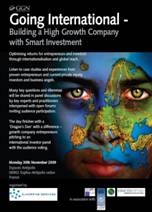Veneto Innovazione: MOST IMPORTANT SERVICES
Technology transfer service:
- Support to companies and research centres in the technology transfer services from the audit phase to the dissemination of research results, from the matchmaking to the negotiation phase.
Research Industry Linkages:
- The scheme aims to supply Veneto SMEs and researchers with instruments to support start-up of research projects. The activity is based on a virtual community for information, exchange of proposals and partnerships, training and practical support during the preparation and management of research projects inside the R&D EU Framework Programmes. In general, the goal is to implement the provisions of the regional intervention plan for the Veneto participation in the EU Framework Programmes.
Management of regional R&D schemes:
- Veneto Innovazione assists SMEs providing information and support for R&D proposals, providing technical examination and ongoing plus final assessment of the projects.
THE VENETO REGION
With a surface of 18.391 square kilometres and a population of around 4,6 millions inhabitants, Veneto Region represents around 6% of the Italian territory and 8% of the total Italy's population
Veneto is one of the strongest economic regions in Europe, with a gross domestic product (GDP) estimated at about 9%of the country's gross value added and is fifth among the Italian regions in terms of per capita GDP (24,945.9). The basis of these impressive economic results is the Veneto region's great production capacity, which boasted over 400,000 companies active.
Today 50% of the world's production of eyeglasses, and 70% of Italy's production of sports shoes come from Veneto, while 65% of the world production of ski boots is concentrated in one single industrial district (that of Montebelluna) made up of some thirty towns. Again, 83% of Italy's production of gold jewellery, 30% of the world's marble, and 24% of all the clothing made in Italy, come from here. Most of enterprises, that until now worked at local level remaining connected to the own industrial district, are now experimenting new kinds of collaborations beside national borders.
RESEARCH AND DEVELOPMENT
Veneto spends 0.7% of its GDP in research and development, of which 0.4% in public sector, 0.08% in government, 0.02% in University and 0.2% in the private sector. With the aim of promoting and developing applied research and innovating new processes and products within the field of industrial production, a public company called Veneto Innovazione was set up in 1988 in the Veneto, through the initiative of the regional authorities. Based on the same logic, the Science Parks set up by Veneto Innovazione and the main university centres in the Veneto provide important frameworks for research.
VEGA Science and Technology Park, in Venice houses a complex which is equipped for activities based on high technology. Another development in Venice, THETIS, is a technological centre which has been involved since 1991 in dealing with the problems of the marine and coastal sector, by developing new technological products and applications for the local, national and international markets. Also to be noted are Verona Science Park, and GALILEO Science and Technology Park in Padua, which were founded with the aim of supporting the creativity of companies in the Veneto by means of supplying services linked to technological innovation, research, design, the study of new models, quality and certification.
The Science Parks are accompanied by Centres of Excellence which operate alongside them as actual centres of innovation diffused throughout the regional territory, offering training courses and other services to companies. Often these concern specialised services within the competence of specific local industrial districts, involving the development of activities for training, design, quality control, certification and product development, for the companies based in them.
EDUCATION SYSTEM
The well-coordinated and broadly based services of the four universities in the Veneto region offer over 150 different options, including degrees, diplomas and specialisation courses: 88 at Padua, 35 at Venice (of which 10 are at the University of Venice Architectural Institute) and 32 at Verona .
With its total academic staff consisting of 3,378 professors, lecturers and researchers (6.7% of the entire Italian total), the Veneto region's average staff/student ratio of 35.7 is better than the national average of 38.6.
LINKS TO MOST IMPORTANT WEBSITES OF THE REGION
www.regione.veneto.it
Official website of the region
www.venetosviluppo.it/
Economic Development Organisation





